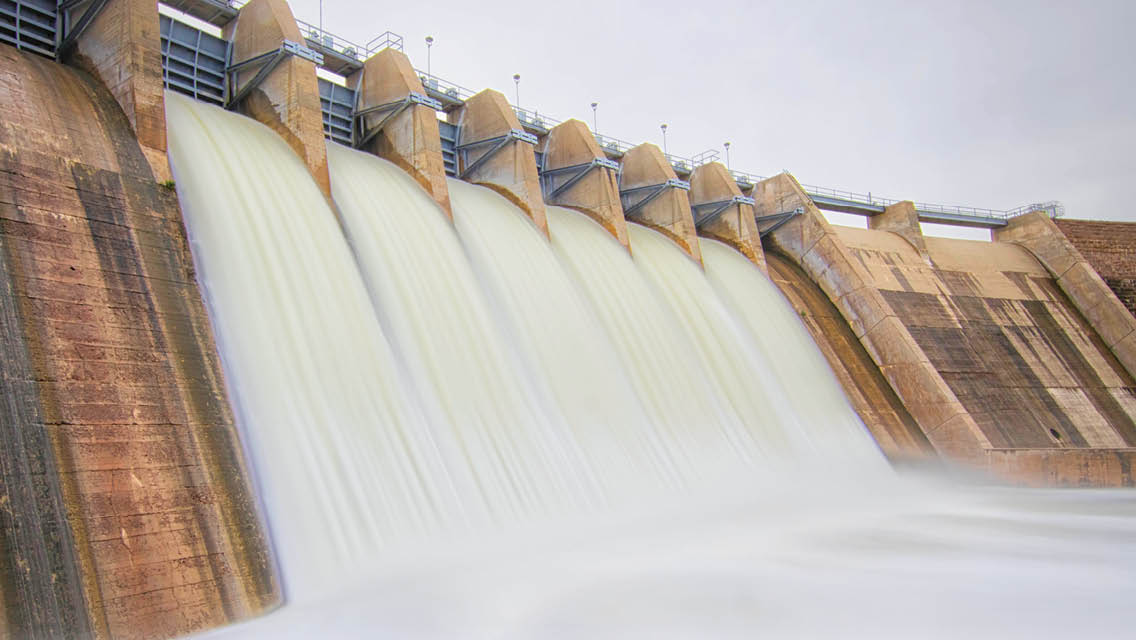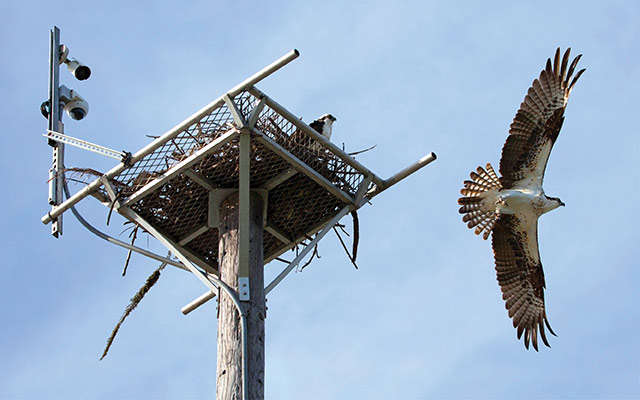There’s a special grace in paddling a river. The waters carry you along as if you’re nothing — a fallen leaf floating on the fast-moving surface. Land is left swiftly behind. The multihued stones of the riverbed spin away below the surface like a kaleidoscope. At times, the current rests; at other times, it’s relentless. The river shepherds you downstream with immense natural power.
We’re kayaking the Kinnickinnic in west-central Wisconsin, a jewel of a river largely hidden away from civilization within forested gorges in the midst of farming country. It’s a glorious hot summer day: Kingfishers swoop after minnows, herons wade on stilt-like legs, trout knife through the shadows. The river and its clean, clear, cool waters wash away all concerns.
Rivers run through much of our lands — but we like to dam them up, harnessing their power and controlling their flow. Over the past century, the United States has led the world in dam building: We’ve been as busy as beavers building more than 90,000 dams, according to the U.S. Army Corps of Engineers’ National Inventory of Dams. And there are tens of thousands of uncataloged small dams on creeks and streams.
We erected all those structures to power flour mills, run machinery, produce electricity, provide irrigation for agriculture, control flooding, create jobs during the Great Depression, and form lakes for our recreation. Hydropower was hailed as clean energy — but “clean” is a relative term, often dependent on who uses it.
Today, there’s a growing consensus that dams are far from eco-friendly. And as the old technology ages, maintenance costs rise — even if the dams are no longer productive and we’re just trying to keep them from collapsing.
A nationwide movement has coalesced around the goal of returning rivers to their natural state. And though removing a dam is costly and time-consuming, it can also restore and heal the environment.
Dam-age
The “Kinni” is a river of whitewater. The innumerable sets of rapids range from small, unclassified rocky ripples to true Class II whitewater. And oftentimes they follow almost on top of each other, leaving us with aching arms as we strive to steer our kayaks safely through.
If you read the river, it tells you how to navigate its labyrinth of rapids. Rocks leave a wake: That wake points back at the paddler like an arrow, issuing a warning. The chute between rocks points downstream, offering a direction to follow.
On a larger scale, if you read a river, it also tells you if it’s healthy.
Research has found that rotting vegetation and algae associated with dams’ warm, still reservoirs create 1 billion tons of greenhouse gases each year.
Dams block rivers, interrupting fish migration. Dams slow rivers, resulting in stagnant backwaters, which can lead to algal pollution, decreased water-oxygen levels, and increased water temperature. And dams capture tons of muck, sediment, and silt behind them. Research has found that rotting vegetation and algae associated with dams’ warm, still reservoirs create 1 billion tons of greenhouse gases each year.
Advances in technology and industry have rendered most dams useless. Only 3 percent of them still churn out hydropower — and they supply about 7 percent of the U.S. power demand.
Our dams are also aging. Concrete crumbles, metal rusts — and someday it may all come tumbling down. The Association of State Dam Safety Officials reports that, as of 2019, some 15,600 dams were considered “high hazard” and their failure could be catastrophic. Some 70 percent of them will be more than a half-century old by 2025, built with now-outdated engineering, according to a 2017 American Society of Civil Engineers survey.
In May 2020, the earthen Edenville Dam near Midland, Mich., collapsed after a torrential rainfall. It was one of the largest dam failures in the United States: The resulting crest was 35 feet high, and the surge of water overflowed another dam downstream, forcing 10,000 people to evacuate their homes.
More failures like this are possible because of a combination of aging infrastructure and the frequent, heavy rains that climate change is likely to generate. This has created a “perfect storm” for such catastrophes, Kent State University hydrologist Anne Jefferson, PhD, told National Geographic.
Fifty-six percent of our dams are privately owned — a unique situation in U.S. infrastructure. Still, the cost to rehabilitate current dams exceeds $65 billion, according to official estimates, and we’ll all be paying that bill.
“It’s not whether they’re going to fail; it’s a matter of when they’re going to fail.”
Yet even though public costs for maintaining dams and hydropower facilities is at a historic peak, the Association of State Dam Safety Officials says maintenance, safety, and oversight are underbudgeted.
“The dawning reality is that the dam, levee, and other infrastructure failures will be more likely to occur as global warming intensifies,” Shana Udvardy, MS, a climate-resilience analyst with the Union of Concerned Scientists, told National Geographic. “It’s not whether they’re going to fail; it’s a matter of when they’re going to fail.”
River Restoration
The Kinni is a mere 22 miles long, yet two concrete dams block it — a testimony to our love of harnessing rivers. Built in the city of River Falls, Wis., to power milling and produce electricity, both dams are still in operation today and require ongoing repair and maintenance. In 2018, the city council voted to remove the first dam by 2026; the other will follow. It’s all part of a farsighted plan to restore the Kinni to its natural state.
Across the United States, some 900 dams were removed between 1990 and 2015. Since then, about 50 to 75 more have been removed annually. Other locks and dams have been retired from service, although they still require upkeep.
A dam can’t simply be dynamited; the wall of water behind it would engulf everything downstream. Instead, it must be deconstructed slowly — and expensively — as the water is drawn down. Preparations for the largest dam-removal project in history are set to begin in early 2023: demolishing four dams on Northern California’s Klamath River totaling 411 vertical feet holding back a 72 million-cubic-meter wall of water. The cost? $434 million.
After dams are removed, rivers recover quickly. The buildup of silt is soon washed through or absorbed. Fish quickly return.
After dams are removed, rivers recover quickly. The buildup of silt is soon washed through or absorbed: The sediment from Wisconsin’s Milwaukee River following the Woolen Mills Dam removal was flushed away in just six months. Fish quickly return: Spawning fish were back in Maine’s Souadabscook Stream only months after a dam was demolished. Floodplains, wetlands, and subsidiary rivers can be restored to provide natural flood protection. The environment — and people — gain resilience to climate change.
For the little Kinni, expectations are high. The River Falls plan notes that the stagnant reservoirs raise summer water temperatures by 4 to 5 degrees F; removal of the dams will lower them, leading to improved trout habitat and migration. Clearing out sediment will result in cleaner water throughout the region’s lake and river watershed, enhancing stormwater management to boot. The long-lost waterfall that the city is named for will be restored. And all this will improve habitat for other wildlife, as well as people.
My family has paddled and fly-fished on the Kinni my whole life. It’s been a refuge from the urban hustle and bustle surrounding it. To see the river restored brings great hope — and we plan to be there, paddles in hand.
This article originally appeared as “A Big Dam Problem” in the March 2022 issue of Experience Life.





This Post Has 0 Comments